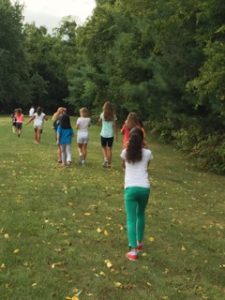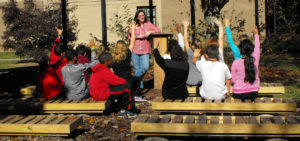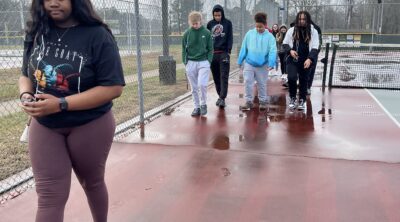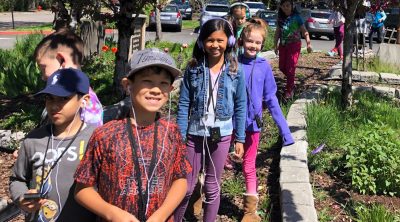There’s no arguing with it—movement is good for all of us. At The Walking Classroom, we readily recognize that walking while listening helps kids learn! We have seen that it benefits students of all learning types academically and physically, but sometimes it’s easy to let our movement significantly slow down, especially in winter. Ready to emulate the bears and prairie dogs, bats and hedgehogs, as temperatures drop and the sky goes gray, we feel an increased desire to tuck ourselves away. But with spring on the horizon, it’s time to take advantage of the opportunity to escape the classroom’s confines and do some outdoor learning (where it’s easier to maintain physical distance)!
While many animals rely on hibernation to help them survive, we humans need to get out and get moving in order to thrive! If the weather is not at its most cooperative, just relocate your walking route to a more temperate clime! Have a hike around the gym or the hallways of your school building.
Get Moving
There are some very real reasons to keep your students in motion, no matter what the weather. Heaven knows, there are enough forces conspiring against their access to activity. Reduced recess time at school and concerns about stranger danger play into increased indoor pursuits and more time spent in screen-based entertainment at home. Getting young people moving any way we can is beneficial! Physical activity not only burns off excess energy; it also has mental health benefits. It reduces stress and lowers anxiety too.
… and Get Out When You Can!
Regularly expose your students to fresh air and sunshine through outdoor learning experiences! Research reveals that time spent outdoors improves awareness, reasoning, observation skills, communication, concentration, creativity, and more!
There are a bevy of benefits to getting outside. Being outdoors requires (and thus helps to develop) different skills. Learning outside the classroom setting stimulates social interaction. Students engage more easily with one another when they are outside because they feel a sense of freedom and autonomy. They can move as they choose in response to the different environment in which they find themselves. This liberation engenders confidence, and confidence elicits happiness!
Think about it. When was the last time you encountered a disgruntled student in an outdoor learning environment? The combination of sunshine, fresh air, and the sounds of nature make for a perfectly positive educational setting! Students have no choice but to be happy and engaged!
 Take Advantage of the Outdoors to Extend Your Students’ Learning
Take Advantage of the Outdoors to Extend Your Students’ Learning
When the weather outside functions in your favor, take advantage and add in some outdoor learning. Simply extend your lesson with an outdoor activity. Survey your setting and prowl through the podcasts to decide what will work best. While STEM-based lessons look to be the most logical choices, there’s no need to limit yourself!
A podcast on Simile and Metaphor (4-#11, 5-#72, Complete-#4) can be enhanced outside. Have your students generate their own similes and metaphors based in nature.
And, there’s nothing better than a natural setting to introduce your students to the poems of Robert Frost (4-#23, Complete-#33). Encourage them to create an original poem about an element or event in nature! Even a grammar lesson on Prepositions (5-#21, Complete-#15) can become even more engaging as students scramble to share outdoor-inspired prepositional phrases!
When it comes to science topics, a field trip need not be far afield. Teach your students about the Water Cycle (4-#30, STEM-#12, Complete-#148) outside, where it actually occurs! They may be inspired to create a water cycle of their own or even act it out, role playing the process as drops of water while they are outdoors!
Or, it might be interesting to dig deeper (pun intended!) into Rocks of the Earth’s Crust (4-#30, STEM-#12, Complete-#134). Find a spot for your would be rock hounds to scavenge and obtain samples to identify in a fun outdoor lab activity.
Finally, the right setting presents an optimal opportunity for not just extending the lesson but expanding your students’ outdoor education experience! Inspired by podcasts about Conservation (5-#7, STEM-#36, Complete-#129) and environmental heroes like Rachel Carson (5-#8, STEM-#37, Complete-#157) and John Muir (5-#12, STEM-#23, Complete-#166), you and your students may even want to create a schoolyard habitat! Now, that’s an idea!





Leave a Reply